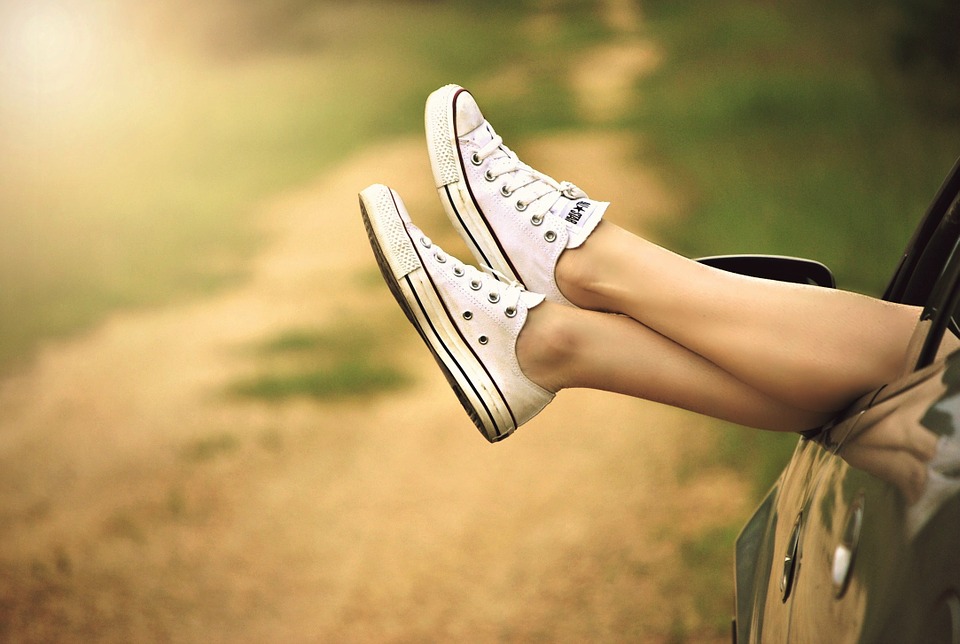Choose your shoes! Running vs Walking Shoes

Anyone who walks, hikes or runs on a regular basis soon learns how crucial it is to have good shoes. So what’s the difference between a walking and a running shoe? And are they interchangeable? After all, decent shoes aren’t cheap, so can you save money by having a pair for both activities?
Check out the following to understand why, if you’re at all serious about either sport, it’s absolutely essential to choose a shoe that’s fit for purpose.
The science bit (AKA the difference between running and walking)
While it might seem that running is pretty much the same as walking – just a bit faster – when it comes to the stresses and strains it puts on the body there’s quite a dramatic difference. The most important of these are as follows:
- When you walk one foot is always on the ground. When you run there is a moment during each stride when neither foot is in contact with terra firma, and you’re suspended in mid-air.
- Because of this, there is a distinct increase in impact when running. Each time your foot hits the ground significant force reverberates through the ankles, knees, hips and spine, not to mention all the muscles, tendons and ligaments of the legs. There are various numbers quoted when it comes to how much force this equates to, but it’s generally agreed that this is around 3 to 3.5 times your body weight*.
- We all have different styles when running, and exactly how the foot strikes the ground depends on this. The first impact could be mainly the heel, the toe or the midfoot. But when walking we all tend to have a fairly similar action of a heel-toe roll.
What this means is that a running shoe needs to provide more support than one used solely for walking.
The best running shoes counteract these increased forces
There are many, many running shoes on the market. However, they all tend to have the following in common:
- Increased cushioning, mainly in the heel and forefoot to cope with that extra force as your foot hits the ground with each stride.
- Many running shoes have a heel that’s slightly higher than the toe – called the ‘heel drop’. This is to counteract overpronation, a common gait issue for many runners. Depending on the amount of motion control a particular running shoe has will determine the size of this heel drop, which can be as much as 8mm.
- Running shoes have a flared heel, especially those designed for trail running. These are especially good for those whose fore and midfoot strike the ground first.
- Increased flexibility in the arch (midfoot), rather than the forefoot, which is more commonly seen in walking shoes.
How walking shoes differ
Because of the differences in action when walking as opposed to running there are some significant contrasts in a walking shoe.
- There are fewer forces involved with each stride, so less cushioning is needed in the heel and forefoot.
- To promote a natural walking motion there is much less of a heel drop – in many cases, none at all.
- They don’t have heel flare because the walking motion strikes heel to toe. A flared heel would obstruct this natural movement.
- The action of walking is to push off the forefoot, so most walking shoes will have increased flexibility in this area.
We’re all individual
We all have different needs when it comes to walking and running shoes. The type that perfectly suits you will depend on many factors, including your style of movement, foot shape, arch height and more. There are so many shoes on the market all designed for different needs. Specialist shops are the best place to purchase new running or walking shoes as they can assess your particular requirements and advise on the correct solution for you. The most vital aspect of choosing any shoe, be it for either option, is that it feels comfortable.
Walking and running can be easily introduced into any level of fitness plan, and the friendly team at Bailey Fitness will be delighted to advise on how it could up the ante for your health efforts. With gyms at various locations around WA, they offer welcoming community gyms for regular people, just like you. With a whole range of fitness options, including classes, personal training, plus state of the art training equipment, you can try them out for free with their All Access Free 7 Day pass. Visit their website at baileyfitness.com.au to discover more and get your fitness goals on track.
Akshay Sharma
Latest posts by Akshay Sharma (see all)
- Best Single Door Fridge Models Of 2025 Features, Energy Ratings & Price Guide - December 22, 2025
- 5 Critical Things You Must Know for Professional Custom Badge Quality: An Expert’s Guide - November 3, 2025
- Are You Using a Loan Calculator for Second Hand Car Rightly? - October 13, 2025
- Round Steel Tanks: Long-Term Solutions for Water Storage - September 19, 2025
- Embrace the Culture: Syna World Hoodie and Syna World Tracksuit UK - September 13, 2025
- Here’s How To Get Quick Access to Finance in Delhi
- Important Factors that Determine Cost of Home Window Repair Service
